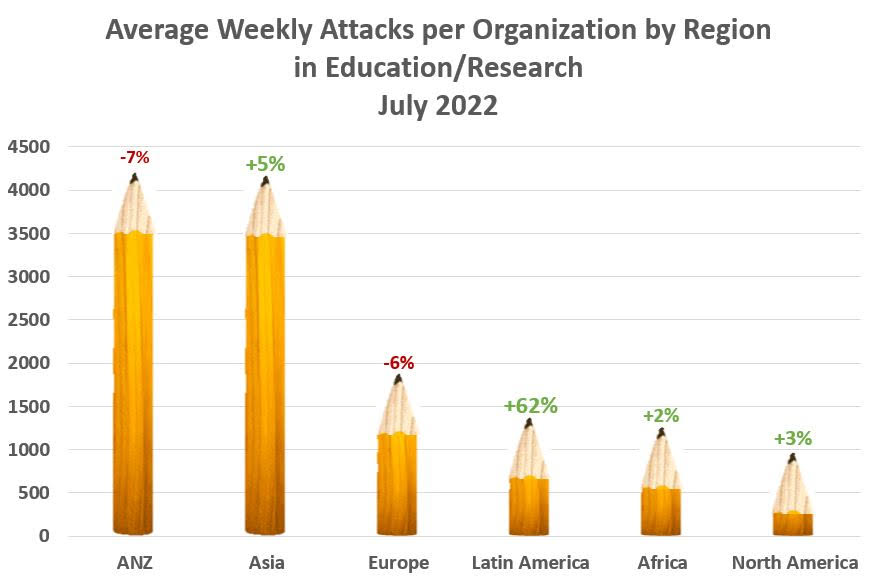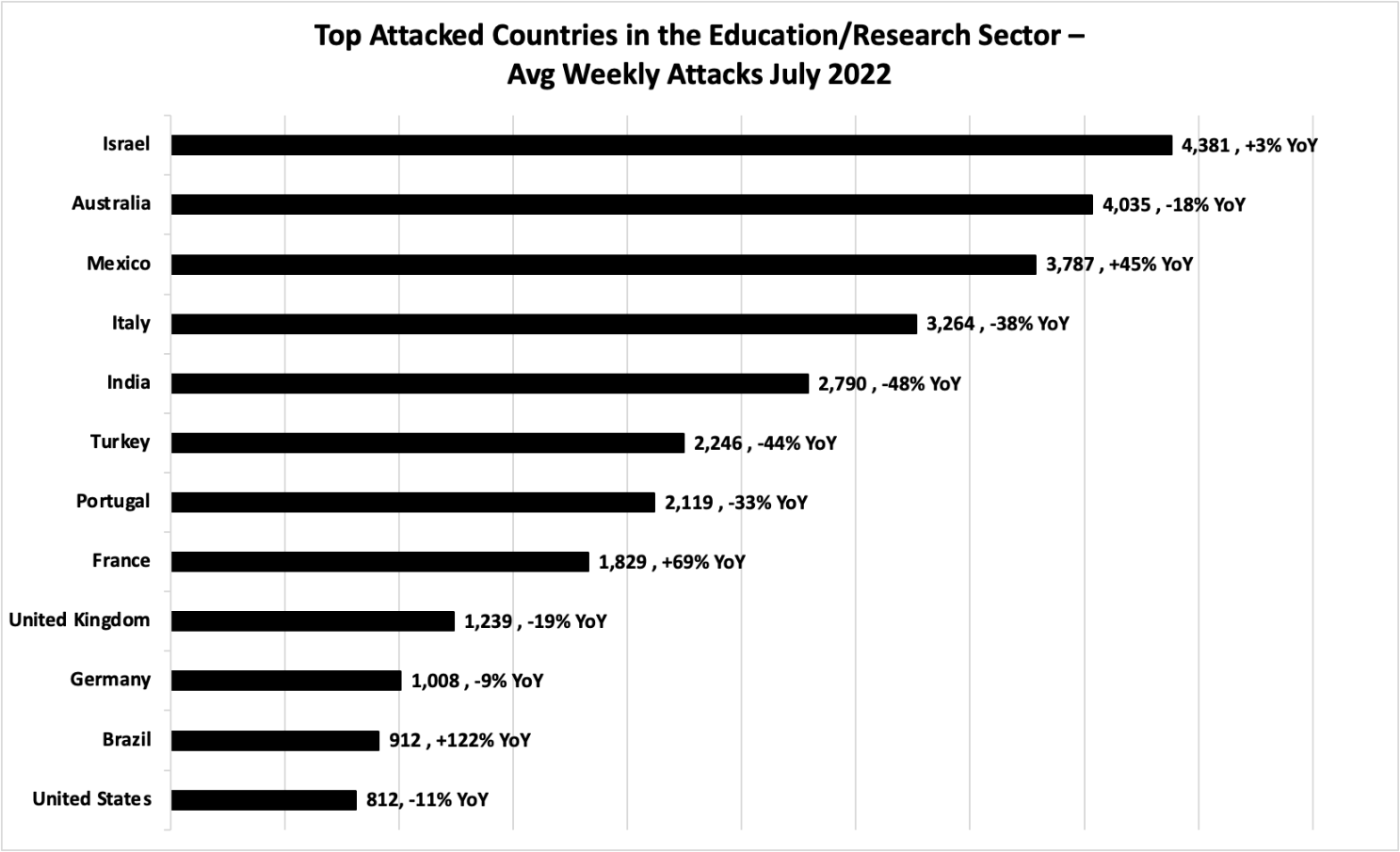Based on data from Check Point Research (CPR), the first half of 2022 displays significant uptick in attacks across all sectors.
The recently published Cyber Attack Trends: 2022 Mid-Year Report showed 2021’s top industry ranking, with the education and research sector still leading as the most targeted industry, with an average of 2,297 attacks against organisations every week in the 1H of 2022, showing a 44 per cent increase compared to the 1H of 2021.
In July 2022, the education and research sector showed more than double the number of weekly cyber attacks compared to the other industries’ average.
This sector had an average of almost 2,000 attacks per organisation every week (a 6 per cent increase compared to July last year and a 114 per cent increase compared to July two years ago).
Cyber attacks targeted at the education sector can have devastating consequences like the case of Lincoln College, which after suffering a ransomware attack, was the final straw that contributed to their decision to shut down on 13 May 2022, after 157 years. A US liberal arts school based in Illinois, Lincoln College had survived major world events, depressions and the 1918 flu pandemic. It closed its doors for the final time after the devastating impact of the COVID-19 pandemic and a ransomware attack.

According to the CPR numbers, education attacks by region in July 2022 saw the ANZ region had been the most heavily attacked by malicious cyber actors with 4,176 attacks per organisation, every week. The education and research sector in Asia closely followed with 4,171 attacks, and Europe with 1,861 attacks. Latin America has seen the largest increase in weekly cyber attacks with a 62 per cent increase compared to July 2021.

In July 2022, Israel absorbed the highest number of attacks worldwide with a weekly average of 4,381 attacks per organisation, a 3 per cent increase compared to July 2021.
This was followed by Australia with 4,035 attacks on average per week (18 per cent decrease YoY) and Mexico with an average of 3,787 weekly attacks (45 per cent increase compared to July 2021).
Brazil has seen the largest increase in weekly cyber attacks according to CPR data, with a 122 per cent increase compared to July 2021. The next country that suffered the biggest increase in cyber attacks is France, with a 69 per cent increase YoY.
In the US, organisations in the education/research sector suffered from an average of 812 weekly cyber attacks. This is a slight decrease of 11 per cent compared to July 2021, though during the past month, a steady upwards trend was seen, with the last week reaching similar numbers as last year.
The CPR team suggest the following tips for schools and students to keep protected against cyber attacks:
- Be phishing-aware. Be wary of clicking on links that look in any way suspicious and only download content from reliable sources that can be verified. Remember that phishing schemes are a form of social engineering so if you receive an email with an unusual request, check the sender’s details carefully to make sure that you are communicating with colleagues, not cyber criminals.
- Anti-ransomware technology allows you to detect signs of ransomware and uncover running mutations of known and unknown malware families by using behavioural analysis and generic rules.
- Passwords matter. It is a good idea to review and strengthen passwords that you use for logging onto remote resources, such as email or work applications.
- Beware of look-alike domains, spelling errors in emails or websites, and unfamiliar email senders.
- Deploy email security solutions. Modern email filtering solutions can protect against malware and other malicious payloads in email messages. Solutions can detect emails that contain malicious links, attachments, spam content, and language that could suggest a phishing attack. Email security solutions automatically block and quarantine suspicious emails and use sandboxing technology to "detonate" emails to check if they contain malicious code.
[Related: AFP arrests Sydney man over SMS phishing scam]

